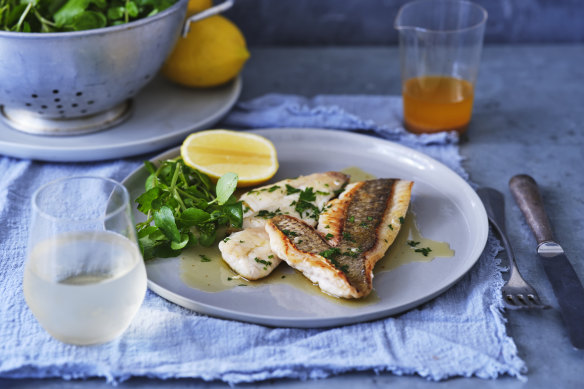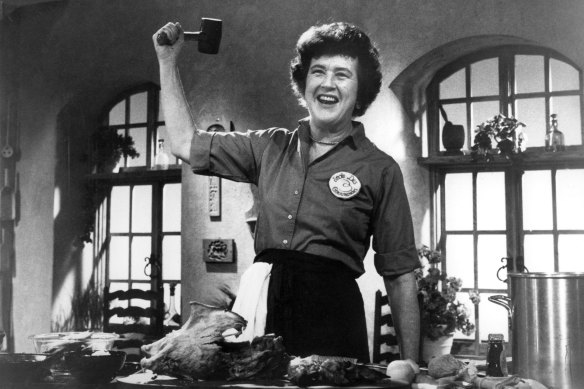
easyTime:< 30 minsServes:2
These days, recipes for any dish you can think of – as well as many you have never even imagined – are just a few taps on a keyboard away. But what are the dishes that every modern cook should have in their repertoire?
I’m taking you through the 10 essential dishes everyone should know how to cook, covering a range of techniques and ingredients. If you can competently make all of these you’ll not only eat well, you’ll be a well-rounded cook at the end of it.
Fish meuniere is a classic of French cooking. Its popularity in the rest of the world is often attributed to Julia Child, who described eating it after recently arriving in France as, “absolute perfection … the most exciting meal of my life”.
Traditionally fish (either whole or in fillets) is dredged in flour and fried in clarified butter, then served with a brown butter sauce. This version is a little different, and it’s more suited to the modern Australian kitchen.
Once you become comfortable making this dish, you can adapt a simple fillet of pan-fried fish into dishes from Japanese teriyaki to a simple Aussie barbecue.
Tips & tricks
Flour
“Meuniere” in French is the feminine form of “miller”, and in this dish it refers to the coating of flour that surrounds the fish, protecting it as it cooks and crisping around the edges. Controversially, I think flour should be optional.
It’s an extra step, makes the process of frying a little more difficult and uses more oil. Cooking a simple fillet of pan-fried, non-floured fish is a far more useful skill that can be applied to more varieties of fish and many other dishes.
Pan-fried fish
While the traditional dish is usually made with sole or flounder, you can use any fish you like. This works well with snapper, whiting, flathead, salmon or barramundi, just to name a few.
The process for pan-frying fish is simple. Place a carbon-steel pan over medium heat and wait until the pan is hot. With practice you can judge this by eye, but otherwise you can test your pan’s heat by observing the Leidenfrost effect: drip a tiny amount of water into the pan and if it “squeaks” and forms a bubble that skims across the surface, it’s hot enough. If the water wets the pan, wait a little longer.

When the pan is hot, add the oil. Don’t add oil to the pan before heating, as it will burn and smoke before the pan gets hot enough. Lay the fish into the pan, skin down. The skin of the fish will want to contract and buckle the fillet, so press the fish firmly down with the back of a spatula, base of a pot or cooking weight for about 30 seconds until the fillet relaxes.
You don’t need to cook things in a pan for an equal amount of time on each side. In fact, this often causes overcooking. When cooking fish, I will often cook one side for about 80 per cent of the cooking time, and the second side for just 20 per cent. Squeeze or press the fillet with your fingers to see if it’s cooked. I like to imagine that I’m biting into the fish as I press it. If it feels raw, just keep cooking.
Alternatively, stick a thin metal skewer into the thickest part of the fish and leave it there for a few seconds. Hold the end of the skewer to your lip and if it feels warm, the fish is done. Fish will be cooked around 45-50C, so if the skewer feels warm against your lip the inside of the fish will be just higher than your body temperature (around 38C).
Beurre noisette
The key to this dish is the beurre noisette, or brown butter. The French translation is “hazelnut butter” – keep that in mind when you’re making it. The butter should turn the mid-brown colour of hazelnut husks. If the butter is too pale it will taste oily; too dark it will taste burnt and bitter; but just-right and it will be rich and nutty. The heat from the pan will continue to colour the butter even after you remove it from the heat, so I like to add a little lemon juice to cool down the butter as it’s removed.
https://ift.tt/eS3Jg56
Entertainment
No comments:
Post a Comment